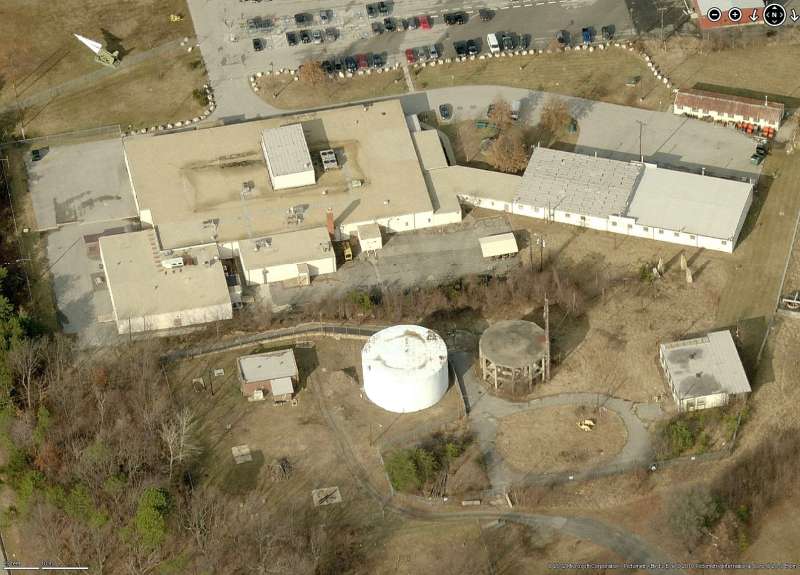
Click on Picture to Enlarge
Fort Meade served as the AADCP for the Washington/Baltimore Defense Area. After 1971, W-13DC acquired operational control of the three remaining Hercules batteries in the Norfolk Defense.
35th Air Defense Artillery Brigade was reactivated in November 1948 at Fort Bliss, Texas. It subsequently moved to Fort Meade, Maryland in 1950 to provide anti-aircraft defense of Washington, DC and to plan the defense of other cities in the vicinity. There, the 35th Anti-Aircraft Brigade set an Air Defense Artillery milestone as it became the first Nike-Ajax guided missile command in 1957. In March 1958, the Brigade was redesignated as the 35th Artillery Brigade (Air Defense), and operated the countries first Nike-Hercules site at Davidsonville, Maryland. It included the 1st Battalion, 52nd Air Defense Artillery Regiment. The Brigade was inactivated on 4 June 1973 at Fort Meade, Maryland.
The Missile Master/Mentor facility and adjacent Air Force radar site are now occupied by the fort’s Director of Information Services. The building’s intact as are the barracks, support buildings and radar towers. Below is a picture of the site.

Units assigned to the command post were HQ Second ARADCOM Region (3/51-8/61), HQ 35th ADA Brigade (2/50-12/73), HQ 23rd ADA Group (12/73-9/74), HHB 36th (1/’54-9/58) and HHB 1/562nd (9/58-12/62). The co-located Air Force long-range radar unit was the 770th Radar squadron (10/61-1/80), equipped with (at least) an AN/FPS-67 (22 Apr 94)
The 1974 picture below shows the last Commanding Officer of the 35th ADA Group, Fort George Meade, Col Shaw
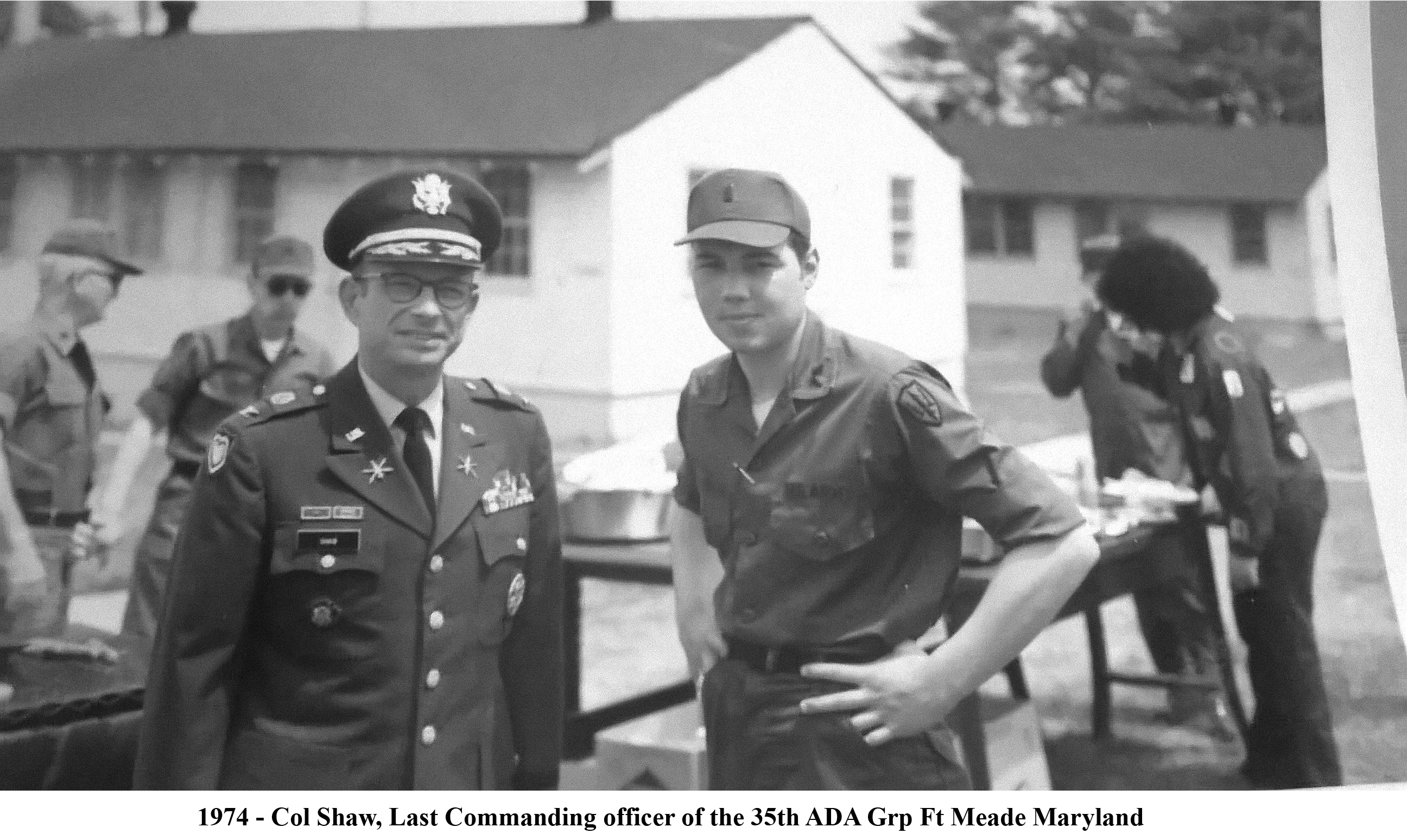
History
In December 1953 B/36th Anti-aircraft Artillery Battalion finished Nike training and occupied a temporary Ajax site on the western portion of the post, south of MD 198 and east of the Parkway and Maryland City. On 30 May 1954, ARAACOM declared the installation operational, marking the first deployment of surface-to-air missiles in the world.
AADCPAADCP, AKA "Ad Cap", is an acronym that stands for Army Air Defense Command Post. The purpose of the AADCP is to provide command and control of the air defense artillery (ADA) fire units assigned to it. This involves coordinating the defense by assigning individual targets to the fire units. Other duties include serving as a communications center for disseminating and deciphering encrypted messages between higher command echelons and the batteries, and coordinating with Air Force and NORAD assets.
Below is a picture of the AADCP radar
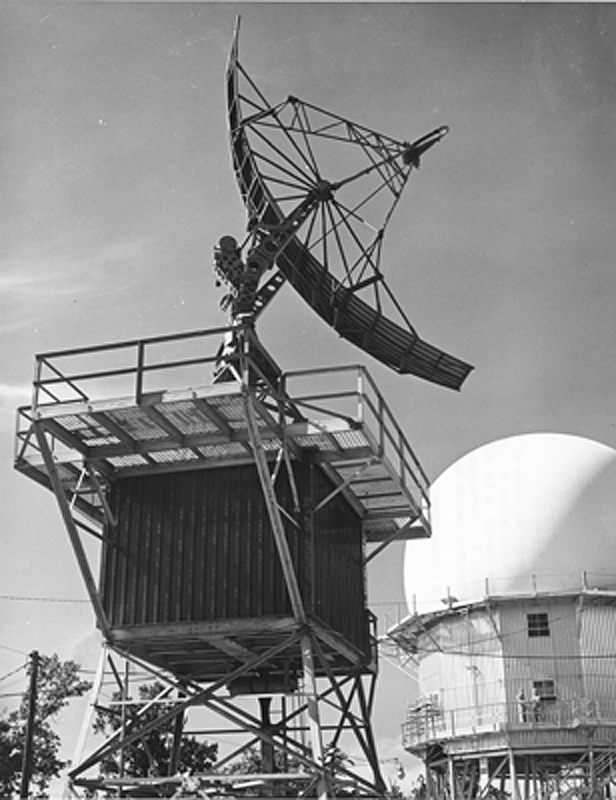
The blue room is where the actual tactical operations of the AADCP took place. The Nike Hercules information has been declassified, however, the NORAD information that went on in the Blue Room is still sensitive. The "Blue Room" Blast Door was just like the Blast Doors that were in each Nike Site. However, the "Blue Room" itself, had no resemplance to what was inside the Nike Site Blast Door.
Upon entering through the Blast Door, you come into the "Blue Room". On the left hand is a small bunk room where crewmen could take turns getting short catnaps through the long night shifts. This little bunk room had a barred window that would open to the outside of the building. On the right hand is a doorway that leads into the "commander's dais" (pronounced "di - us"),
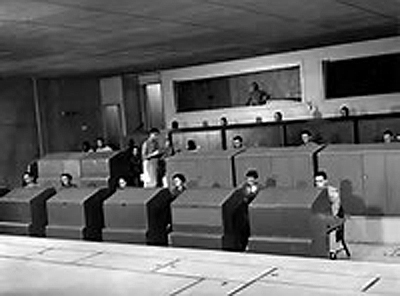
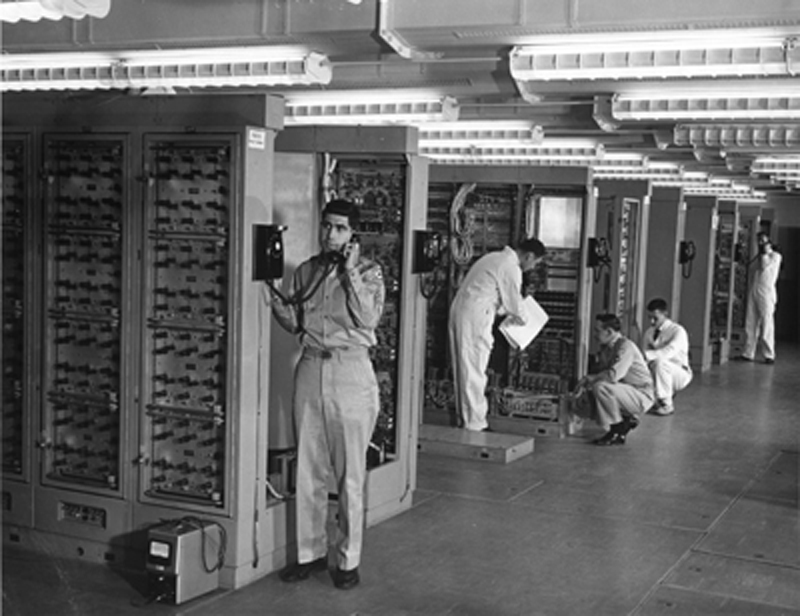
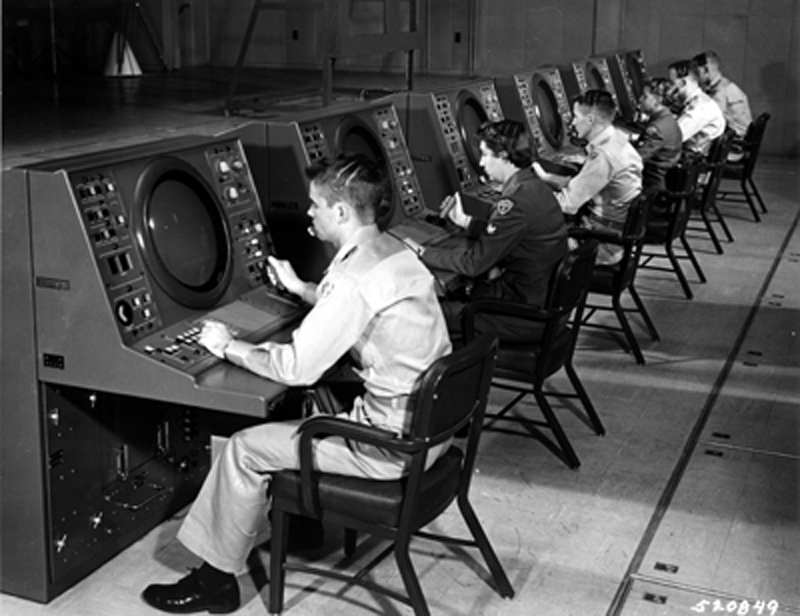
The commander's dais was carpeted in blue and was equipped with a long desk with some communications gear and chairs which faced a large curtained window that looked out over the Blue Room proper. At the back of the commander's dais was a large map of the Defense Area. This was where the brass would hang out during exercises. The large window had a small door in it that could opened to allow enough of the noise through to keep tabs on what was going on in the Blue Room.
Immediately on the other side of the large window and down a couple of feet could be seen the three consoles for the AN/TSQ-51 "Missile Mentor" system with their rows of lighted buttons and their large round orange screens sweeping out the radar picture and other information, where the operators would sit and do the hands-on part of entering targets into the system, identifying friend or foe and assigning the targets to the firing batteries. The "Missile Mentor System" replaced the old "Missile Master System" in July of 1966, bringing solid state and computer technology to the command of missile systems in the field.
The computer consoles had a large black trackball that would be under the right hand that would be used to roll out the cursor over the display with your palm, and a button under your right thumb to "click" with.
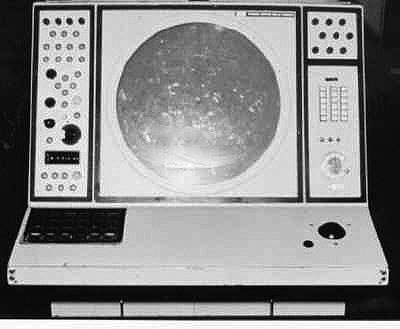
Beyond the consoles (from the commander's perspective) and down a couple more steps to the lowest part of the floor was what was called "The Dais". This was a long table with cubbyholes for forms, books, and phones and such where the battery status and most of the communications tasks were performed. There was an old mechanical typewriter there where one would recorded everything that happened on a log sheet, round the clock, seven days per week.
Just beyond the dais and up on a tall black riser behind a retractable red curtain was a very large clear plexiglass map with edge lighting that made the markings on it glow bright. The wall behind it was black so there would be no distraction to the viewer by the activity that went on behind it, where there were hookups for headsets and a few chairs for the plotters. This was where the manual plotting, tracking, and status of aircraft was done. This activity went on in parallel with the electronic system. Not only did it provide an immediate backup in the event of some kind of electronic system failure, it also provided the command staff an immediately readable assessment of the threat situation.
The plotter's job was to listen to aircraft positional and status updates from a number of sources and transcribe these into legible symbology onto the map with colored grease pencils. Since the writing was performed on the backside of the map, everything had to be written backwards as in a mirror image so that it would come out looking right when viewed from the front.
Other items in the Blue Room included displays indicating defense readiness state, readiness condition and equipment status of the batteries and scheduled maintenance, communications gear, as well as the document safe. There were steel diamond plated panels that covered concrete cable troughs in the floor. The cables ran everywhere under there and tied the various IFF, radar, computer, and console equipment together.
On the left at the bottom of the stairs next to the blue room door, was a multi-purpose or storage room where some ECCM (electronic counter-counter measure) equipment and protective masks and other items were stored.
Directly to the left of the storage room was the coffee room. The coffee room also contained a couple of wall lockers with assorted paper forms, office supplies and a table with chairs. Beyond the coffee room was a long equipment bay that lead to the van that contained the computer.